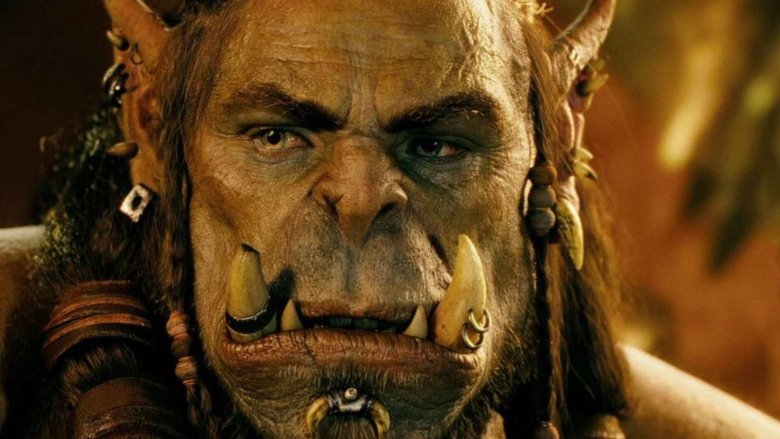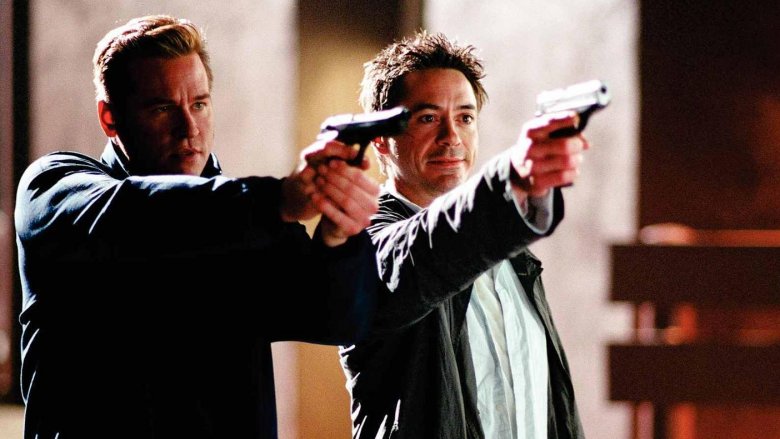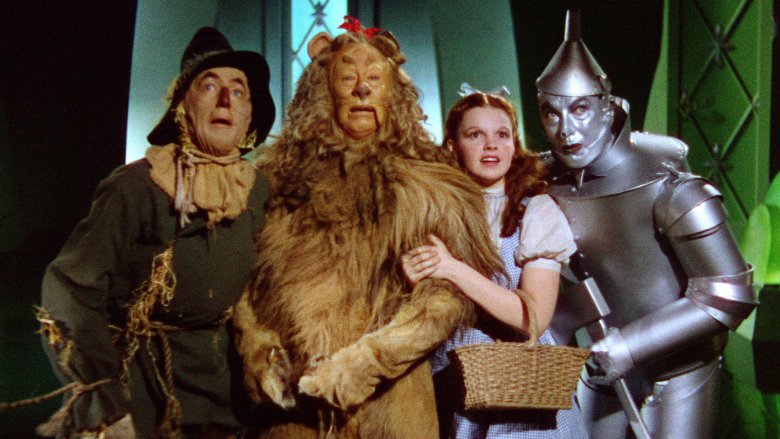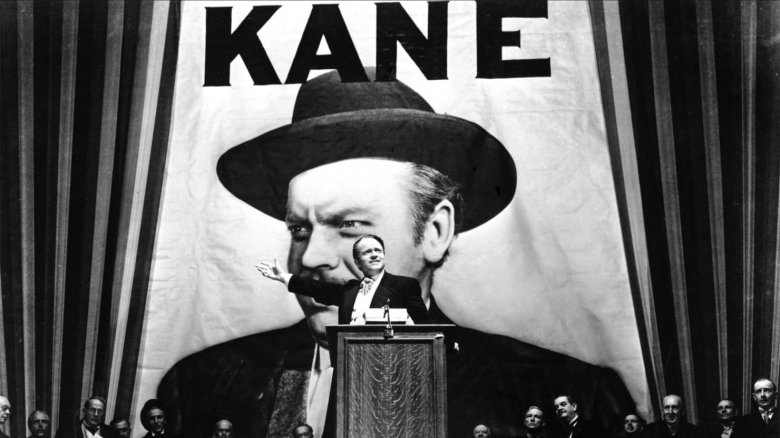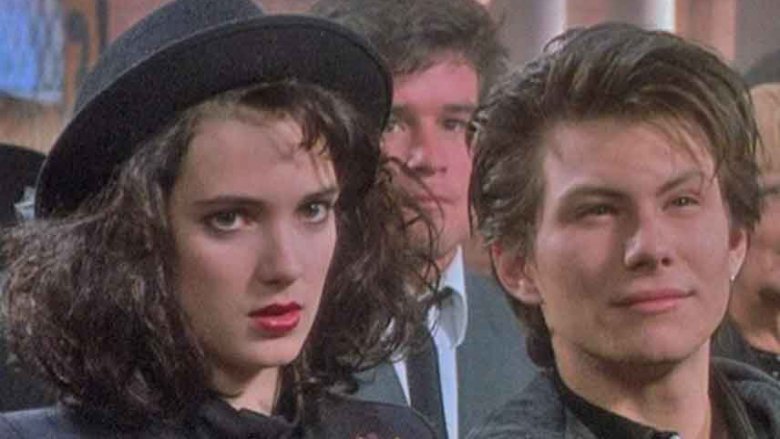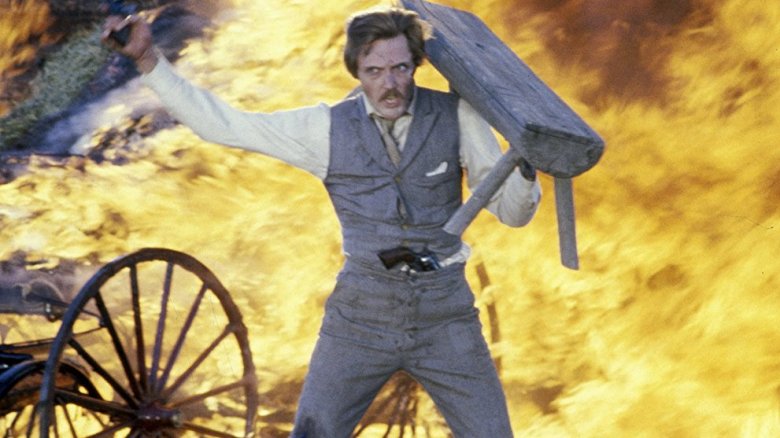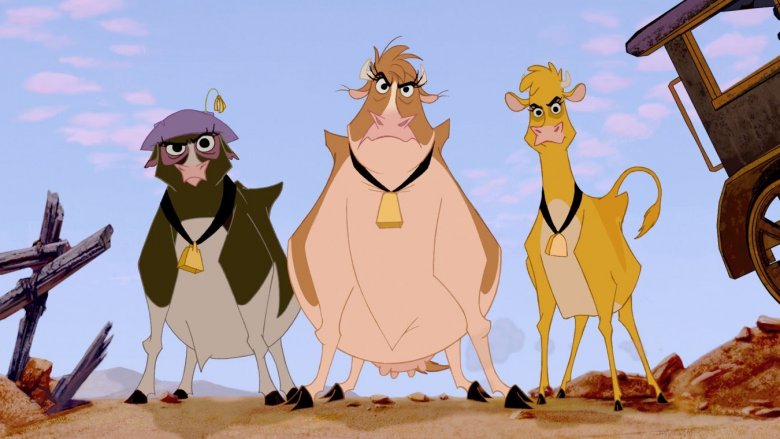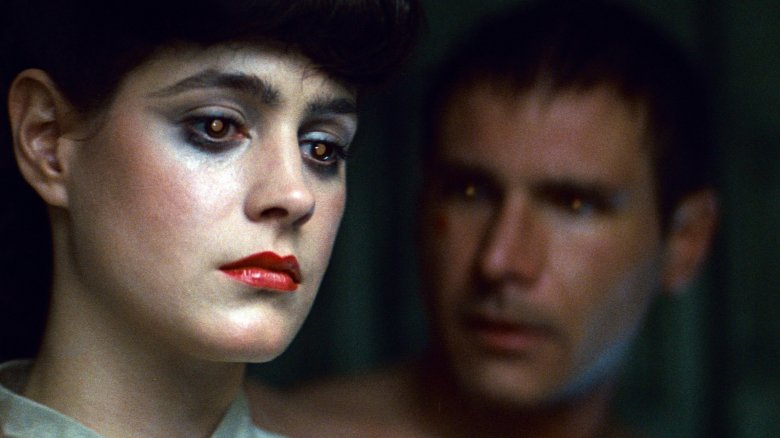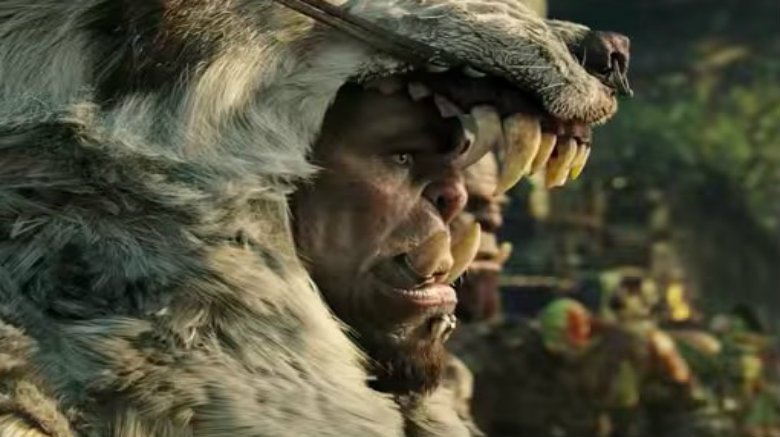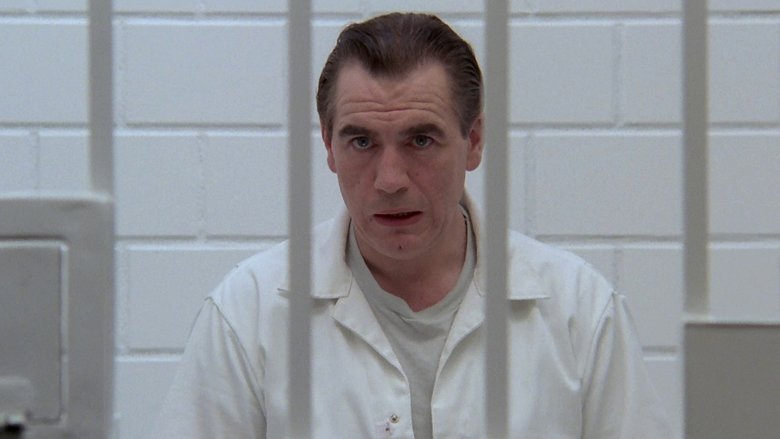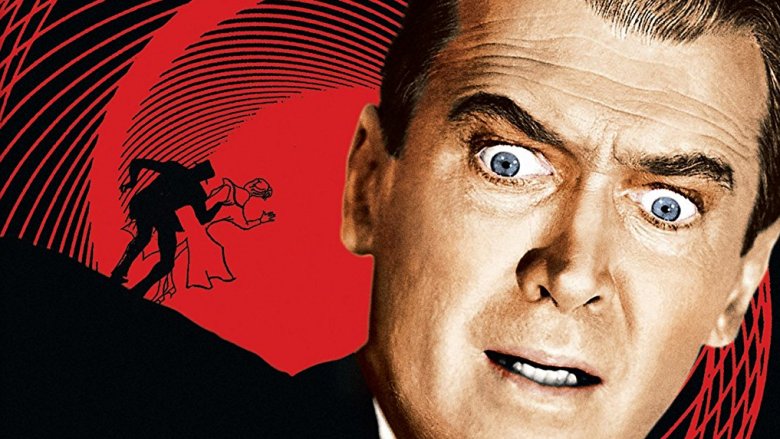Box Office Bombs That Changed Everything
At a time when box office earnings are sinking and the reputation of many Hollywood players has come into question, the landscape of cinema looks more uncertain than ever. Studios have always taken a hit when one of their films struggle to earn money at the box office, but if too many blockbusters bomb in the current climate, there's now a real fear that Hollywood will struggle to recover in the face of competition from streaming services and illegal downloading.
However, while the word "bomb" usually connotes devastation and loss, it's worth remembering that a bomb's impact can also change a landscape forever. Although thousands of films have failed to make a splash in cinemas, some failures changed Hollywood forever, and it's become impossible to imagine the movies without them. Here are some of the best box office bombs that didn't fade into obscurity.
Kiss, Kiss, Bang, Bang (2005)
It's hard to remember now, but there was a time when Robert Downey Jr.'s career was plagued with legal troubles and substance abuse, all of which threatened to end his life in the spotlight for good. By the turn of the century, Downey was relegated to supporting roles that failed to capitalize on the magnetism and charisma that he'd showcased before his controversial personal life hit the tabloids.
Fortunately, Lethal Weapon screenwriter Shane Black decided to take a chance on Downey and cast him in his directorial debut, Kiss, Kiss, Bang, Bang. Downey and Val Kilmer shared electric chemistry onscreen, working together as an odd couple forced to save the day in Black's modern-day reimagining of the hardboiled detective genre.
Despite strong reviews, box office earnings for Kiss, Kiss, Bang, Bang trailed off with a whimper, only making $15.8 million on a $15 million budget. However, the film did help reignite interest in Downey as a leading man, and it wasn't long before his trademark snark was brought to the fore once again in the role of Marvel's Tony Stark. Without Downey, it's unlikely that Iron Man would have become the household name that he is today, and it's impossible to imagine the MCU without him.
The Wizard of Oz (1939)
The enchanting story of Dorothy and her adventures in a faraway land are now firmly embedded in pop culture, spawning a host of remakes, sequels and spinoffs in all forms of media. However, when Frank L. Baum's classic novel was adapted for the screen in 1939, The Wizard of Oz didn't fare as well as one might expect.
Sure, the film won over the hearts of audiences everywhere with its innovative use of special effects and Technicolor, but high production costs prevented The Wizard of Oz from turning a profit for MGM, despite grossing $3 million worldwide.
Fortunately, there really is no place like home for Dorothy and her newfound friends, as The Wizard of Oz subsequently recouped its costs thanks to regular showings on TV, enchanting viewers in the comfort of their own homes. Combine that with numerous cinematic re-releases and it's safe to say that this is one of the most successful box office bombs of all time, one that continues to hold a spell over audiences decades after its initial release.
Citizen Kane (1941)
Nominated for nine Academy Awards and regularly hailed as the best movie of all time, Citizen Kane had a massive impact when it was released in 1941. In fact, the innovative way director Orson Welles approached shooting and editing forever changed the narrative of American cinema, still influencing films released even today.
Unfortunately, life ended up imitating art and Citizen Kane suffered a tragic fate at the box office when it was released, much like the characters depicted within the film itself. After media tycoon William Randolph Hearst discovered Welles had based the story on his life unfavorably, any mention of the film was banned in his newspapers or on his radio stations. As a result of this, many cinemas refused to screen Citizen Kane in fear of a lawsuit and RKO Pictures ended up losing $160,000.
It wasn't until French critics such as André Bazin started to praise Citizen Kane a decade later that the film returned to the public's attention and was subsequently revived in 1956. And if that didn't cement Citizen Kane's place in the annals of history, The Simpsons immortalized the film for a new generation in the landmark season 5 episode "Rosebud."
Heathers (1988)
Greetings and salutations to those of you who have watched Heathers on repeat, memorizing each line by heart. Those entranced by its cynical cruelty and endlessly quotable dialogue will already know that Heathers singlehandedly created the teen genre as we know it today, spawning a wave of imitators—much like the original Heather herself.
In the years that followed its release, classic teen films such as Clueless, Mean Girls, and Easy A all copied notes from Heathers and drew inspiration from its legacy. Even the original Heathers didn't become the most popular kid in school overnight, though. Despite featuring breakout performances from Winona Ryder and Christian Slater, Heathers sat alone in the lunchroom when it was first released in 1988, reaching a measly 16th place in its opening weekend. Although the cult classic eventually found an audience on VHS, fans who later discovered Heathers couldn't help but wonder why the teens of the day weren't ready for such a nihilistic take on the genre. What is your damage, '80s kids?
Heaven's Gate (1980)
As far as titles go, Heaven's Gate ranks among the most misleading of all time, closing a number of doors for the talent involved thanks to a hellish production and an estimated loss of $121 million at the box office. United Artists never recovered, and the studio was subsequently acquired by Metro-Goldwyn-Mayer in 1981.
Initially, Heaven's Gate held a lot of promise, starring an incredible lineup of talent that included Kris Kristofferson, Christopher Walken, and Jeff Bridges. However, neither they nor Academy Award-winning director Michael Cimino could save this unusual Western, which remains one of the film industry's most infamous box office bombs.
As if that wasn't disastrous enough, the outright failure of Heaven's Gate has also been blamed for kickstarting the end of the '70s auteur movement, driving American filmmaking away from the kind of director-driven projects that launched the careers of talents like Steven Spielberg and Martin Scorsese. Over the following four decades, critics reassessed Heaven's Gate as a misunderstood masterpiece, but the division it caused between studios and directors continues to be felt even today, and the fight for creative control continues.
Home on the Range (2004)
For decades, Disney ruled animation with a gloved fist, shaping our collective childhood with a host of iconic family movies. The studio has had its ups and downs, however, and in the late '90s, changing trends forced the studio to change direction, shifting away from hand-drawn animation into the arena of CGI.
Fans who lament the loss of traditional animation were quick to blame the downward spiral on films such as Treasure Planet and Atlantis: The Lost Empire, but the nail in the coffin was undoubtedly Home on the Range, a farm-based story that starred a bunch of cows—and was greeted by a whole lot of tumbleweed in half-empty theaters.
While Range's box office failure played a huge role in Disney's decision to abandon traditional animation, the technique itself was not to blame. Whether audiences perceived hand-drawn movies as "old-fashioned" or not, the real problem with the movie was its script. Disney eventually realized the error of their ways and briefly returned to cel animation for The Princess and the Frog and Winnie the Pooh, although CGI remains the priority.
Blade Runner (1981)
The anticipation that surrounded Blade Runner 2049 prior to its release implied that the original movie enjoyed massive success. But after earning just $33.8 million on a budget of $28 million, Blade Runner was considered a disappointment at the time of its release—although the odds were stacked against Ridley Scott's dystopian classic from the beginning, opening in cinemas the same day as Star Trek II: The Wrath of Khan, The Thing, Conan the Barbarian, and most importantly of all, E.T. the Extra Terrestrial.
Sci-fi fans were spoiled for choice on the week of June 25, 1981, and it turns out audiences preferred to watch a cuddly alien rather than follow Harrison Ford in a rain-soaked future version of Los Angeles. Since then though, Blade Runner has raced to the head of the pack among sci-fi aficionados, leaving an indisputable mark on the aesthetic of classic movies such as The Matrix and Minority Report and anime hits like Ghost in the Shell.
Warcraft (2016)
Video game fans in 2016 were disappointed to learn that Warcraft grossed even less in its opening weekend than other summer flops such as Battleship and Fantastic Four. Domestic earnings of just $24 million barely made a dent on an estimated budget of $160 million.
However, Warcraft still managed to level up in ways few analysts could have predicted. Once it hit China, it raked in $156 million over the course of just five days. Never before had an American blockbuster failed so utterly on its home turf while breaking records of this size overseas, and this disparity is predicted to have a huge impact on the way Hollywood operates in years to come.
As the Chinese box office continues to grow, more movies will be geared toward this market, to the point where some Hollywood movies may only be released in Asia. This could turn out to be a good thing for Western filmgoers who dread the idea of Warcraft 2, but the impact of this shift is already being felt; films like Skyfall and Iron Man 3 altered their content for the Chinese market. It may only be a matter of time before Eastern audiences are prioritized by Western companies, and the impact could change Hollywood forever.
Manhunter (1986)
Five years before the lambs went silent and Anthony Hopkins won a well-deserved Oscar for the role of Hannibal Lecter, director Michael Mann was the first to adapt Thomas Harris's series for film with the oft-overlooked Manhunter.
Infused with the kind of neon visuals and gritty subject matter that Mann would later popularize in Heat, the cinematic debut of Hannibal Lecter initially failed to find an audience on screen, grossing only $8.6 million on a budget of $15 million. Critics, however, devoured Manhunter with gusto, commending the film's atmospheric storytelling and its disturbing insight into the psychological depravity of murder.
Whether or not you enjoyed Brian Cox's portrayal of Lecter (spelled here as "Lecktor"), it's hard to deny that the critical success of Manhunter changed the landscape of horror forever. Without this first effort, the critically lauded Hannibal TV show may have never hit our screens—and Silence of the Lambs would have never become the third movie to win all five major categories at the Academy Awards in 1991. Thanks to Manhunter, the doctor is in, and he's here to stay.
Vertigo (1958)
Much like Citizen Kane, Alfred Hitchcock's Vertigo has been heralded as a dizzying triumph of cinema in recent years, topping critics' polls as the greatest film of all time. But do a little sleuthing of your own, and it soon becomes apparent that this wasn't always the case.
Critics writing in 1958 compared Vertigo negatively to other efforts from Hitchcock, and initial box office earnings suggested that audiences agreed. Sure, Vertigo did eventually break even, but its domestic intake of $3.2 million ranked comparatively low against Hitchcock's other classic movies. The Master of Suspense reportedly blamed the failure on the 25-year age gap between his two leads, but the reality is that audiences were probably put off by the 128-minute running time and complicated subject matter.
Following its re-evaluation by critics, the power that Vertigo holds over cinema remains hypnotic to this day thanks to suspenseful performances from James Stewart and Kim Novak. In practical terms, though, it's Hitchcock's technical skills that ensured the film's legacy would live on past its initial release. Vertigo was the first film to make use of the popular "dolly zoom," a camera effect that disorientates the viewer by playing with perspective—as seen in countless later movies such as E.T. and Jaws.
